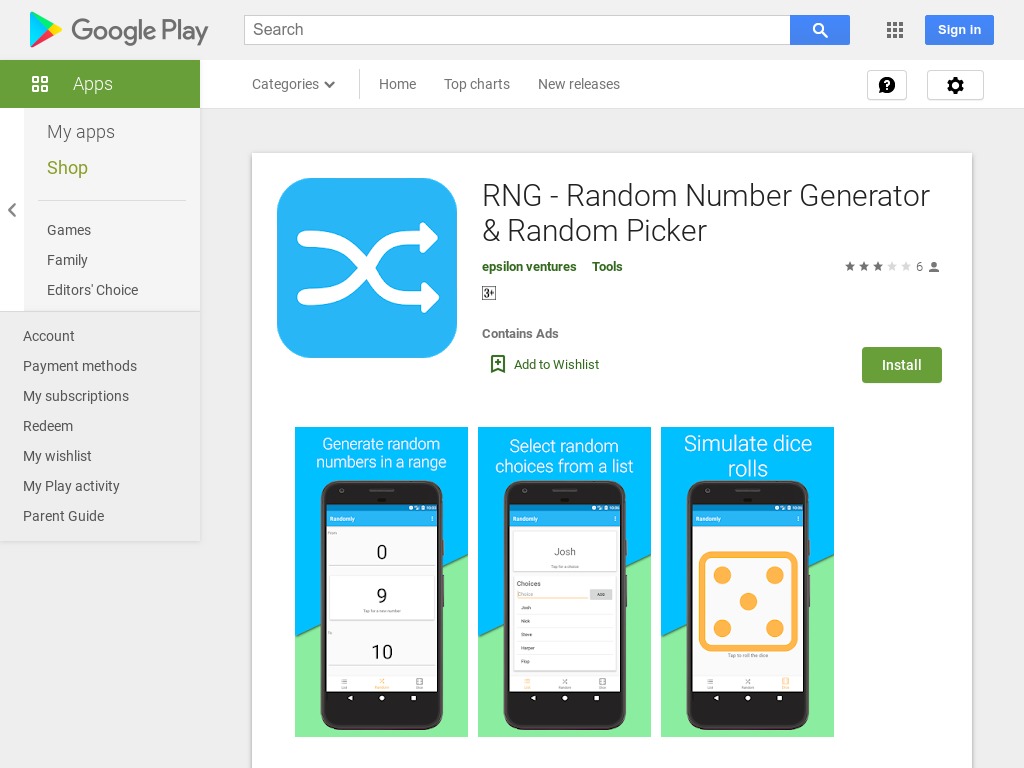Rng Prediction Software
New game is geared towards quick betting and guarantees provably fair results
BetConstruct always puts a lot of time and effort into creating new igaming entertainment and extending its gaming portfolio. And by applying these best concepts and practices the software developer has developed a new game called Monti.
The K-epsilon model is one of the most common turbulence models, although it just doesn't perform well in cases of large adverse pressure gradients (Reference 4). R/askscience: Ask a science question, get a science answer. At the start of the Pandemic, a lot of the concern was about the novelty of the virus and the fact that the majority of humans would most likely not have contacted a coronavirus and so the body wouldn’t know how to efficiently “fight” it. The output displays the polynomial containing the estimated parameters alongside other estimation details. Under Status, Fit to estimation data shows that the estimated model has 1-step-ahead prediction accuracy above 75%. You can find additional information about the estimation results by exploring the estimation report, sys.Report.
Following the style of BetConstruct’s RNG Gaming Suite, this new instalment is geared towards quick betting. Monti suggests players set a number on the scale and guess whether the next randomly displayed digit will be of a higher or lower value. In addition to the simplistic concept and design, the game holds hot odds with the size depending on the number and outcome that the player chooses.
Monti guarantees provably fair results, something that players pay particular attention to when it comes to games of chance or prediction. For partner operators BetConstruct addresses this notion and backs the game with a predefined RNG system. So for the players to be sure that the winning number is determined 10 rounds in advance, at the end of each game they are provided with a code through which the fairness of the outcome can be checked.
The format of Monti is pretty much globally understood. That makes the game accessible for the players coming from almost every corner of the world, hence unearthing new revenue channels for global operators and markets regardless of the region.
Gaussian Process Regression Models
Gaussian process regression (GPR) models are nonparametric kernel-based probabilistic models. You can train a GPR model using the fitrgp function.
Consider the training set , where and , drawn from an unknown distribution. A GPR model addresses the question of predicting the value of a response variable , given the new input vector , and the training data. A linear regression model is of the form
where . The error variance σ2 and the coefficients β are estimated from the data. A GPR model explains the response by introducing latent variables, , from a Gaussian process (GP), and explicit basis functions, h. The covariance function of the latent variables captures the smoothness of the response and basis functions project the inputs into a p-dimensional feature space.
A GP is a set of random variables, such that any finite number of them have a joint Gaussian distribution. If is a GP, then given n observations , the joint distribution of the random variables is Gaussian. A GP is defined by its mean function and covariance function, . That is, if is a Gaussian process, then and
Now consider the following model.
where , that is f(x) are from a zero mean GP with covariance function, . h(x) are a set of basis functions that transform the original feature vector x in Rd into a new feature vector h(x) in Rp. β is a p-by-1 vector of basis function coefficients. This model represents a GPR model. An instance of response y can be modeled as
Hence, a GPR model is a probabilistic model. There is a latent variable f(xi) introduced for each observation , which makes the GPR model nonparametric. In vector form, this model is equivalent to
where
The joint distribution of latent variables in the GPR model is as follows:
close to a linear regression model, where looks as follows:
Rng Prediction Software Free
The covariance function is usually parameterized by a set of kernel parameters or hyperparameters, . Often is written as to explicitly indicate the dependence on .
fitrgp estimates the basis function coefficients, , the noise variance, , and the hyperparameters,, of the kernel function from the data while training the GPR model. You can specify the basis function, the kernel (covariance) function, and the initial values for the parameters.
Because a GPR model is probabilistic, it is possible to compute the prediction intervals using the trained model (see predict and resubPredict).
You can also compute the regression error using the trained GPR model (see loss and resubLoss).
Compare Prediction Intervals of GPR Models
This example fits GPR models to a noise-free data set and a noisy data set. The example compares the predicted responses and prediction intervals of the two fitted GPR models.
Generate two observation data sets from the function .
The values in y_observed1 are noise free, and the values in y_observed2 include some random noise.
Fit GPR models to the observed data sets.
Compute the predicted responses and 95% prediction intervals using the fitted models.
Resize a figure to display two plots in one figure.
Create a 1-by-2 tiled chart layout.
For each tile, draw a scatter plot of observed data points and a function plot of . Then add a plot of GP predicted responses and a patch of prediction intervals.
When the observations are noise free, the predicted responses of the GPR fit cross the observations. The standard deviation of the predicted response is almost zero. Therefore, the prediction intervals are very narrow. When observations include noise, the predicted responses do not cross the observations, and the prediction intervals become wide.
Rng Prediction Software App
References
[1] Rasmussen, C. E. and C. K. I. Williams. Gaussian Processes for Machine Learning. MIT Press. Cambridge, Massachusetts, 2006.

See Also

fitrgp predict RegressionGP